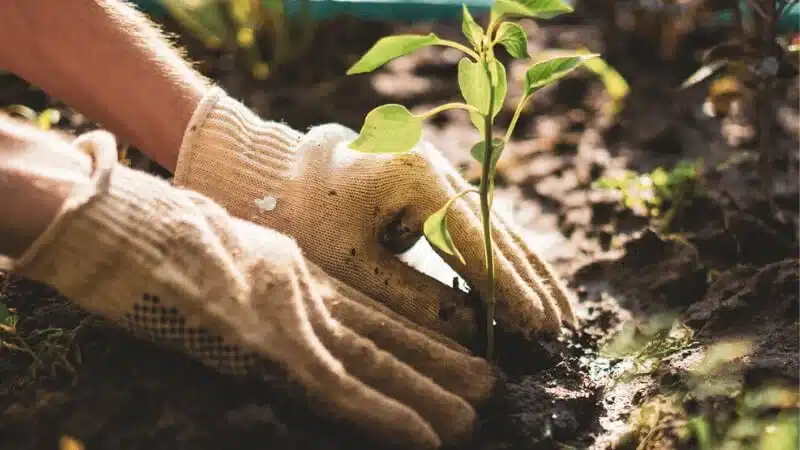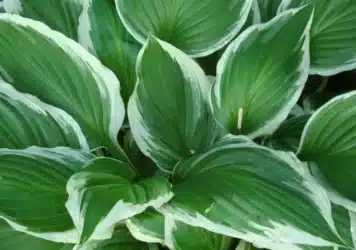How to Use Companion Planting in Your Garden
Team PlantTAGG2023-06-16T07:39:16-06:00[\If you are new to gardening, it may be difficult to know where to start. Whether you want to grow vegetables, flowers or herbs, you want your plants to flourish. There’s a ton of gardening information out there, so how can you make sense of it all?
Companion planting is a popular gardening technique where the plants help each other grow. In this post, we take a look at companion planting and its benefits, as well as examples of companion plants you can use in your home garden.
What is companion planting?
Companion planting is when you plant two or more plants next to one another to aid in their growth. By putting plants in proximity, they may help each other collect nutrients, improve the management of pests, enhance pollination, or produce higher vegetable yields.
Benefits of companion planting
Companion plants typically are beneficial to one another, or one might benefit more without causing harm to the other. Certain plants repel, trap or attract insects, improve environmental conditions, or enhance the flavor of their neighbors. When these plants share space, they often provide more ‘bang for your buck’ in your garden. For example, companion plants can:
- Repel insects – Some plants release chemicals that deter pests and protect plants around them.
- Trap insects – Specific plants are attractive to certain bugs. By placing these “trap crop” plants next to other plants, insects are drawn to them instead of your main crop.
- Attract insects – Blooming plants attract beneficial insects such as pollinators. These insects often feed on pests that attack plants.
- Improve environmental conditions – Some plants, like legumes, have a symbiotic relationship with bacteria in the soil. The result is nitrogen-enriched soil, which is beneficial for plants that are next to these legumes. Another example is planting a tall plant (“nurse crop”) next to a shorter one to protect it from the wind.
- Improve the flavor of your crop – Certain plants can enhance the flavor of plants they are grown next to, making them excellent companion plants.
- Stop disease spread – Diseases spread to plants of the same species when they are planted closely. Adding a different species will create a break that stops the spread.
- Promote Water Retention and Prevent Erosion – The plants hold the soil together and keep it moist. Vining plants like cucumbers provide great shade for the soil, which prevents water loss.
- Maximize Garden Space – If you have a small garden, companion planting can be beneficial. The most common way of saving on space is using tall plants as trellises for climbing plants.
How to grow companion plants
There are different ways to grow your companion plants. Depending on what you are planting and the needs of the various plants (soil type, water, space, etc.), you can decide on the layout of your garden and which companion plants might work. If you are planning to have a traditional garden (not containers), you may want to consider the intercropping arrangements below:
- Row intercropping– growing two or more crops at the same time with at least one crop planted in rows
- Strip intercropping– planting two or more crops together in wide strips
- Mixed intercropping– placing two or more crops together in no specific row pattern
- Relay intercropping– planting a second crop into a mature crop
Companion plant combinations
Gardening is a wonderful way to provide healthy food or display a beautiful landscape for your home. Whether you choose containers or traditional planting, you are sure to reap a more bountiful harvest using companion gardening techniques.
There are different types of plants that grow well together. Various flowers and vegetables make good duos, certain herbs pair well with others, and of course, there are vegetable companions. Below are several examples you can try.
Broccoli & Spinach
Broccoli is an easy vegetable to grow. It grows well with spinach and other members of the cabbage family, such as cauliflower, sprouts and radishes. Growing vegetables such as celery or onion near broccoli will improve the flavor of your crop.
Carrots & Tomatoes
Carrots prefer to be planted next to nightshades. Tomatoes provide shade for carrots, which is great since carrots are sensitive to heat. Additionally, tomatoes release a natural insect repellant for bugs that prey on carrots. Carrots benefit tomatoes by breaking up the soil to allow more air and water to flow to the roots.
Carrots & Onions
When carrots are planted near onions, the onions will repel carrot flies.
Cucumber & Nasturtium
Nasturtiums are flowering plants. They help cucumbers by repelling certain pests and attracting other predatory insects that eat pests. Plus, they add great color to your garden.
Potato & Sweet Alyssum
Potatoes are vulnerable to pests, which is why planting potatoes next to sweet alyssum is a good idea. Sweet alyssum is a low, flowering plant that attracts predatory insects that feed on many of the pests that threaten potatoes. Sweet alyssum also has a subtle, sweet scent.
Basil & Nightshades
Basil repels mosquitoes and flies, which often attack tomatoes and reduce their productivity. Additionally, basil improves the flavor of peppers.
Corn & Green Beans
Beans help corn due to the nitrogen they facilitate in the soil. Corns also add an amino acid that makes the beans form a complete protein beneficial to the body. Additionally, beans benefit from corn by growing up their stalks.
Mint, Lettuce & Beets
The strong scent of mint keeps away flies, rodents and beetles that might attack beets and lettuce. Since mint can be invasive, consider planting it in pots and placing it nearby your lettuce and beets.
Beets & Garlic
Planting beets near garlic is beneficial. The smell of garlic repels root maggots, snails and coddling moths. Additionally, garlic produces sulfur, which helps prevent the development of diseases in beets. Garlic improves the flavor of the beets too.
Radishes & Cucumbers
Radishes attract cucumber beetles. While the beetles destroy cucumbers, they are harmless to the radishes.
Radishes & Spinach
Radishes attract leaf miners from spinach, which keeps the spinach safe while the radishes safely produce healthy vegetables underground.
Dill & Cabbages
Many organic gardeners plant dill near their cabbages. Dill improves the flavor of cabbages, and it attracts insects that feed on pests that attack cabbages.
Marigolds & Bush Beans
Marigolds and Bush Beans are beneficial to each other. Marigolds prevent the invasion of bean beetles, which can cause severe damage to beans and reduce productivity.
Tomatoes & Marigolds
Marigolds protect against nematodes and worms that may attack your tomato plants and stunt their growth.
Growing certain plants together can be beneficial when done correctly. The plants will help each other grow, save on space, prevent attack by pests, and reduce diseases. For more plant care and gardening tips on companion planting and more, let’s connect. The PlantTAGG app is free, with nothing to install or download — simply text ‘PLANTS’ to 46376 to get started today!














Leave a Reply